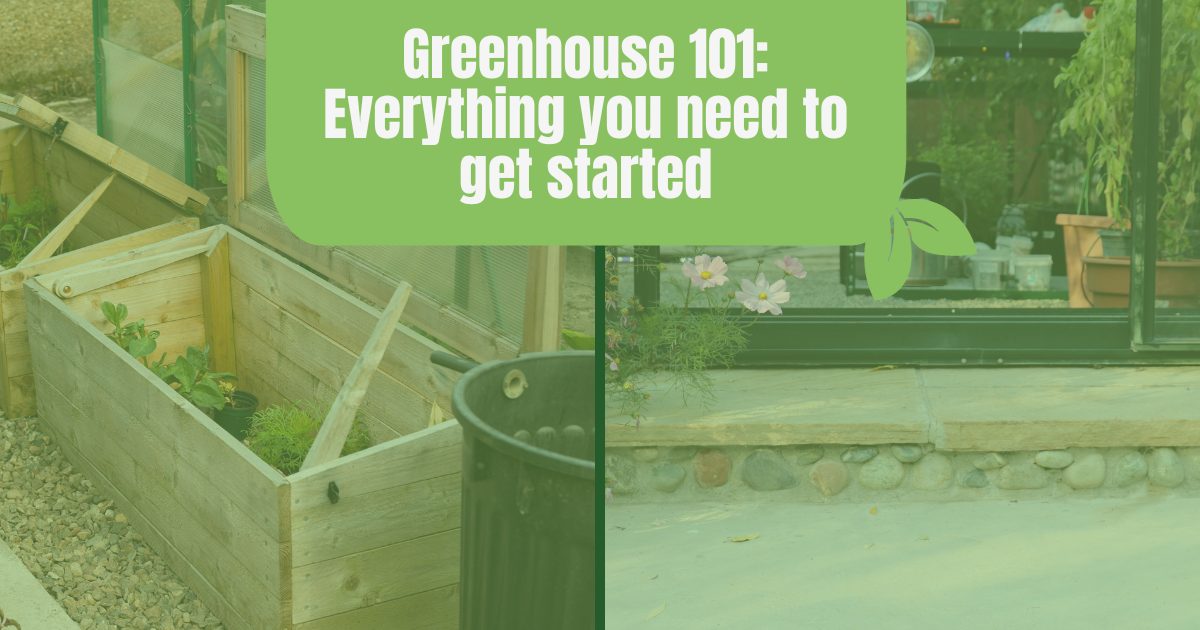Picture this: you are in your very own greenhouse, lush with the thriving plants you’ve always wanted to grow, soaking in warm sunshine. Doesn’t that feel nice?
Making this your reality might seem like an overwhelming task, but it doesn’t have to be. With a little guidance, setting up the greenhouse of your dreams is absolutely achievable.
A well-designed greenhouse allows you to grow and enjoy homegrown fruits and vegetables, stunning florals, exotic or tropical plants beyond the limits of your regular growing season. In this greenhouse guide, we’ll walk you through everything you need to know to get started on your journey—from choosing the right style to creating the perfect environment for your greenhouse plants to thrive.
Ready to find your perfect greenhouse?
Feeling a little overwhelmed by all the options? We’ve poured all our knowledge into one beautiful, easy-to-read guide. Our ebook, “How to Pick a Greenhouse Kit,” walks you through every step so you can make a confident choice that brings you joy for years to come.
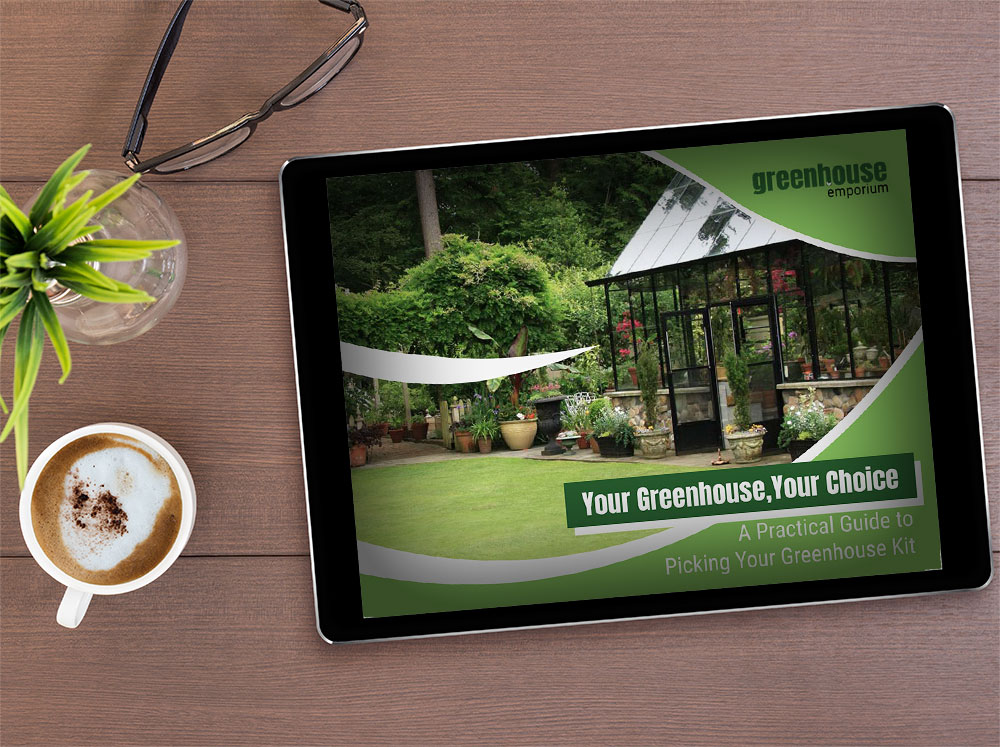
Why start greenhouse gardening?
So, why set up a greenhouse in the first place? There are so many wonderful reasons! A greenhouse gives you a controlled environment to get a head start in early spring, protect tender plants, and even grow plants that might not normally survive in your climate.
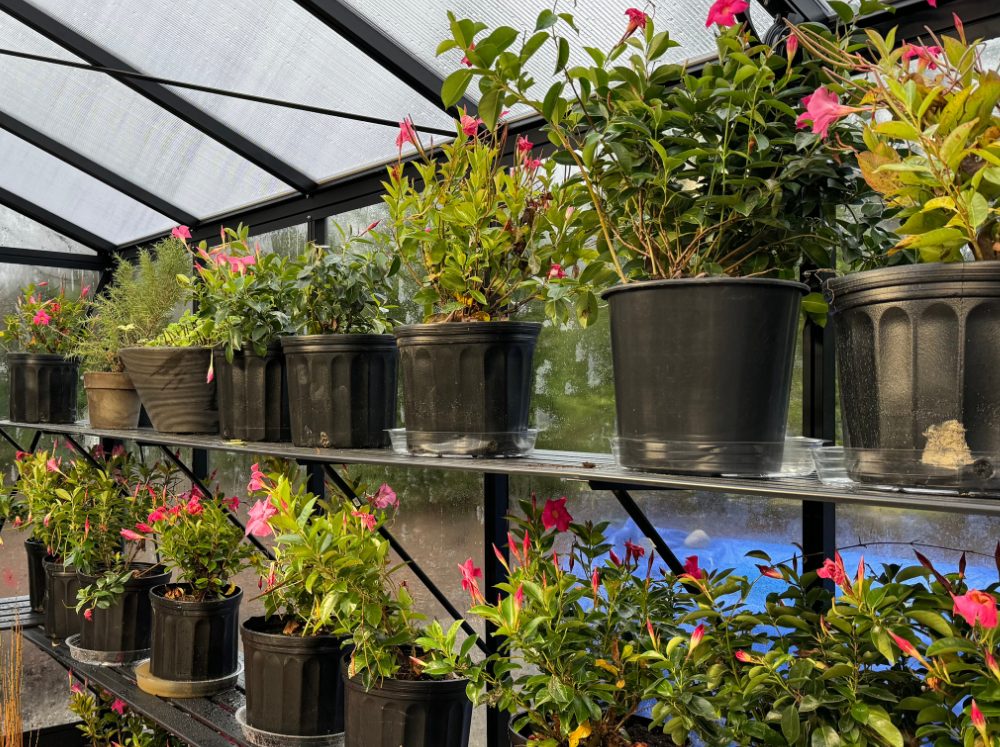
Many people find it helps them live more sustainably and save money on groceries, but one of the best reasons is simply that gardening is great for your mental health.
Choosing your first greenhouse
Once you’ve decided to get a greenhouse, the fun really begins! It’s not as simple as just buying one, at least not if you want it to last. Taking the time to consider your location, budget, and gardening goals will help you choose the perfect structure and avoid needing to start over in the future.
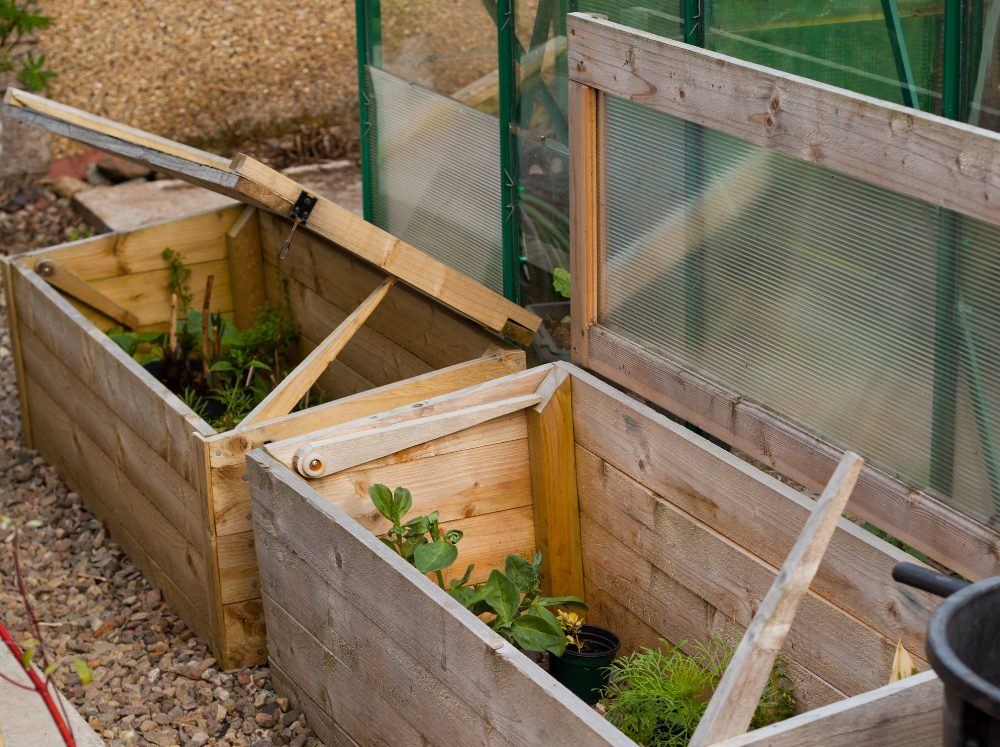
Greenhouse types and categories
To understand which greenhouse is right for you, consider your main goal. Are you hoping to grow food for your family in a backyard hobby greenhouse? Or do you need a larger, more functional commercial greenhouse for a small business? There are also specialized structures, like beautiful conservatories for visual appeal or simple cold frames just for extending the season.
Finding the perfect spot
Before you can lay a foundation, you need to find the perfect home for your greenhouse. The spot you choose is one of the most important factors for your future success and enjoyment.
Look for a location that is level, has good drainage so it’s not sitting in a low spot where water might pool, and has easy access to a water source and electricity. Most importantly, you’ll want a spot that gets plenty of sunlight throughout the day while also being sheltered from strong winds.
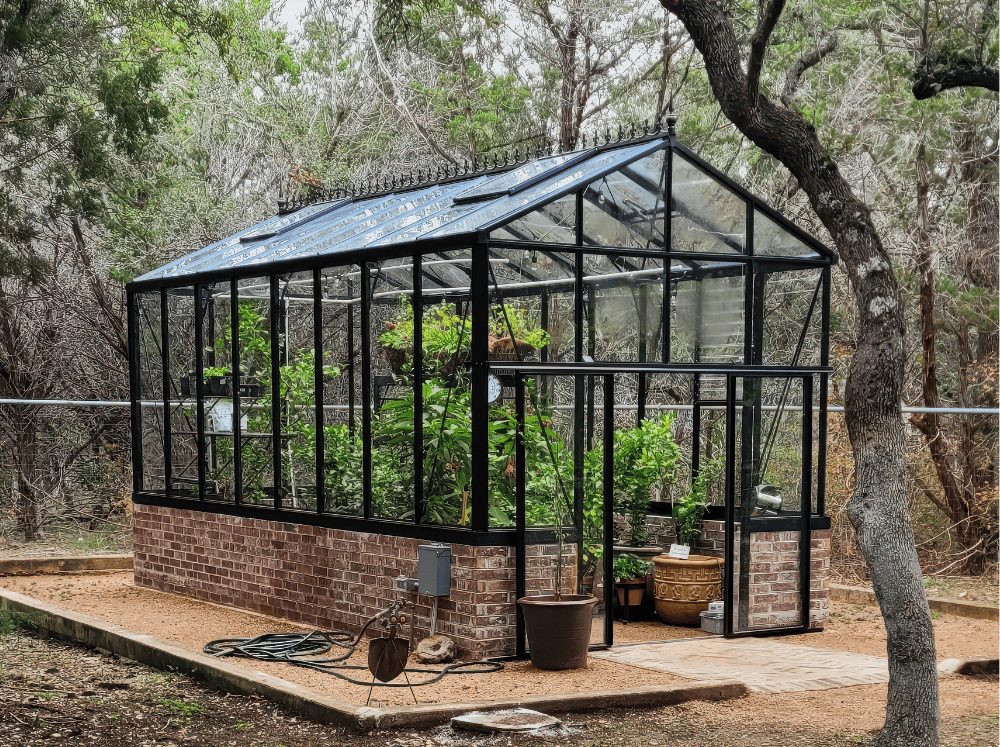
Building a strong foundation
A strong, level foundation is the key to a greenhouse that lasts for decades and can withstand harsh weather. You have several options, from simple compact soil to more permanent wood, concrete, or brick foundations. The right choice for you will depend on your greenhouse type, climate, and budget.
Framework and glazing materials
The frame and covering of your greenhouse are its skeleton and skin—they determine its durability and how it performs. Your frame could be stunning rot-resistant wood, lightweight aluminum, or heavy-duty galvanized steel.
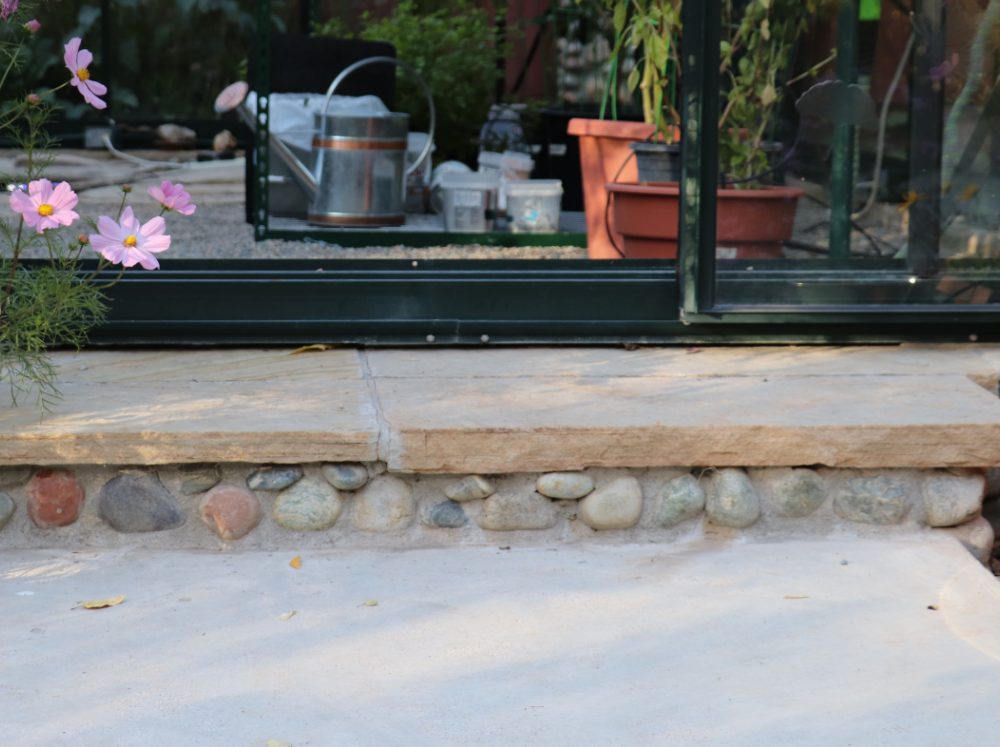
When it comes to the glazing (the clear part), your main choices are classic glass or durable polycarbonate panels. Glass offers that timeless, crystal-clear look and lets in the most natural light, though intense, direct sun isn’t always what’s best for every plant. Polycarbonate, on the other hand, is incredibly strong and diffuses sunlight, which can protect your plants from getting scorched. It also often provides better insulation, helping to keep your greenhouse cozy.
Creating a thriving greenhouse environment
Once your structure is chosen, your focus shifts to creating the ideal environment inside. This means gently managing the essential elements of light, heat, water, air, and soil.
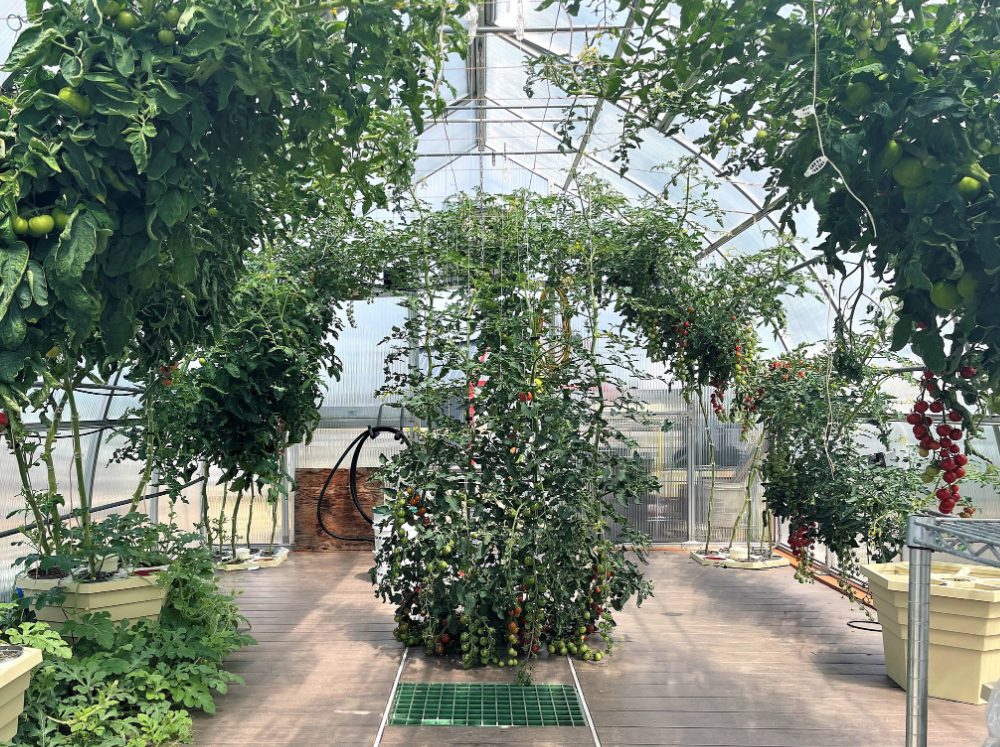
- Light: Your plants need plenty of light to thrive, but it’s all about finding the right balance. You might need supplemental grow lights to give them a boost in the winter months, or shade cloths in the summer to protect them from getting scorched. Learn more about picking the right grow lights here!
- Heat & Cooling: A greenhouse naturally traps heat from the sun, but you’ll need some more temperature control. A heating system can protect your plants on cold nights, while fans or vents are essential for keeping things from getting too hot on sunny days. Explore our guides on cooling your greenhouse and how to heat a greenhouse.
- Water: Since your plants aren’t exposed to rain, you’ll need a way to keep them hydrated. This can be as simple and meditative as watering by hand, or you can set up efficient irrigation systems like drip irrigation or soaker hoses. Discover your options in our complete guide to Greenhouse Irrigation!
- Air: Fresh, moving air is an invisible but vital element for a healthy greenhouse. Proper ventilation from roof vents and fans provides good air circulation, which helps control the temperature, reduces high humidity, prevents fungal diseases, and keeps your plants happy.
- Soil: The soil is where your plants get their essential nutrients. Whether you’re using raised beds, containers, or planting directly in the ground, starting with high-quality soil with plenty of organic matter, like compost, will give your plants the foundation they need to grow strong and healthy.
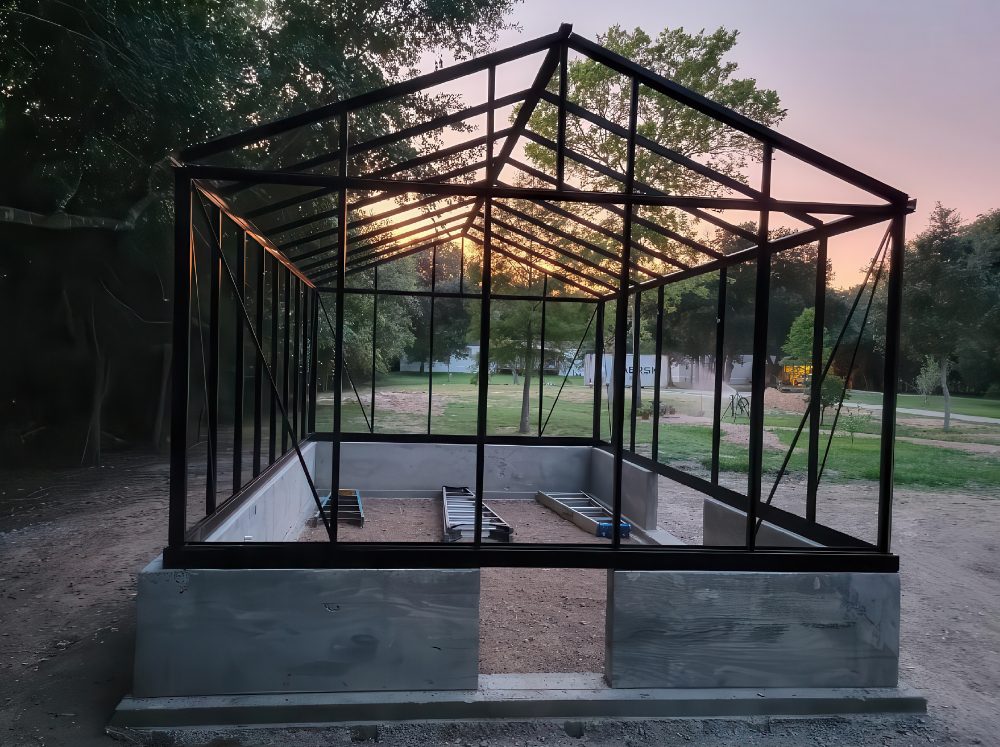
DIY vs. greenhouse kits
Is it better to build your own greenhouse or buy a kit? If you have the skills and can source quality, inexpensive materials, a DIY build allows for full customization. However, it requires more planning and time.
Greenhouse kits are much quicker and easier to assemble, with pre-cut parts and instruction manuals. They also typically come with a warranty, which gives you peace of mind.
Still deciding? Read our in-depth comparison, [Link to: How to build a greenhouse without starting from scratch].
Must-have greenhouse accessories
You can absolutely enjoy your greenhouse without any extra bells and whistles. However, a few key accessories can make your experience much more enjoyable and efficient. Items like sturdy shelving, automatic vent openers, a reliable heater, or a simple shade cloth can make a world of difference in the health of your plants and the ease of your gardening tasks.
Your Greenhouse Journey Starts Here
Choosing the right greenhouse is the most important first step. To help you navigate all the options, we created a free, comprehensive ebook just for you.


What’s next? Time to garden!
Once you have set the stage for a beautiful greenhouse, it’s time to get planting. Even if you’re a beginner, growing in a greenhouse shouldn’t feel intimidating. There are so many easy-to-grow plants that will absolutely thrive in your new setup.

